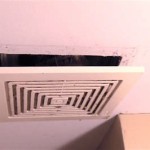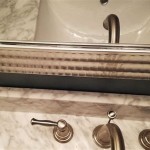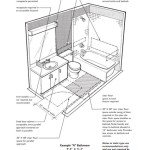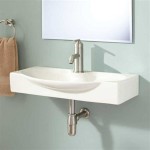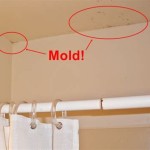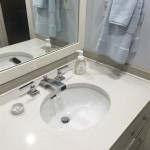How Much Does It Cost To Add A Bathroom To An Existing Home?
Adding a bathroom to an existing home is a significant undertaking that can substantially increase property value and improve overall living comfort. However, understanding the financial implications of such a project is crucial before beginning. The cost to add a bathroom varies widely, influenced by several factors including size, location, materials, and the complexity of plumbing and electrical work. This article provides a comprehensive overview of the expenses associated with adding a bathroom to an existing home, offering a detailed breakdown of the various elements that contribute to the overall cost.
Generally, homeowners can expect to pay anywhere from $5,000 to $35,000 or more to add a full bathroom. This broad range reflects the variability in project scope and quality. A small, basic powder room in an easily accessible location will naturally be less expensive than a large, luxurious master bathroom requiring extensive plumbing modifications. Before embarking on the project, a homeowner needs to consider all associated expenses to create a realistic budget and avoid unexpected costs.
Factors Influencing the Cost of Adding a Bathroom
Several interconnected factors collectively determine the final cost of adding a bathroom. Some of the most important include the bathroom's size and location, the chosen fixtures and materials, and the complexity of the necessary plumbing and electrical alterations.
Size and Layout: The square footage of the new bathroom directly influences material costs such as tiling, flooring, drywall, and paint. Larger bathrooms require more materials, thus increasing the overall expense. The layout also plays a role. A straightforward, simple layout will be less expensive to execute compared to a complex design that requires custom work or specialized construction techniques. The addition of features such as a separate shower and tub enclosure will further increase the size and associated costs.
Location: The location of the new bathroom is a primary cost driver. Adding a bathroom adjacent to existing plumbing lines is significantly less expensive than adding one in an area far from existing waste and water lines. The further the distance from the main plumbing system, the more extensive (and expensive) the required plumbing extensions will be. Basement bathrooms, for example, might require the installation of a sewage ejector pump to move waste upward to the main sewer line, adding to the project's cost. Second-story bathrooms can also be more expensive due to the logistical challenges of transporting materials and the need for structural reinforcement.
Fixtures and Materials: The selection of fixtures and materials has a substantial impact on the bathroom's overall cost. Basic, builder-grade fixtures are relatively inexpensive, while high-end, designer options can significantly increase the budget. A standard fiberglass shower stall will cost considerably less than a custom-tiled shower with a glass enclosure. Similarly, a simple porcelain toilet will be more affordable than a smart toilet with advanced features.
Material choices, like flooring, countertops, and cabinetry, will also influence the price. Tile flooring, for example, ranges from inexpensive ceramic tiles to high-end natural stone options like marble or granite. Countertops can be constructed from laminate (least expensive), solid surface materials (mid-range), or natural stone (most expensive). Custom-built cabinetry will also increase the overall cost. To moderate expenses, homeowners can explore alternatives like prefabricated vanities and stock cabinetry.
Plumbing and Electrical Work: The complexity of the plumbing and electrical work is a major cost factor. Running new water and waste lines involves cutting into existing walls and floors, which can be labor-intensive and require professional expertise. Depending on the home's existing plumbing system, modifications might be needed to ensure adequate water pressure and proper drainage. Electrical work includes installing new outlets, wiring for lighting fixtures, and providing dedicated circuits for items like hair dryers or electric heaters. All plumbing and electrical work should be performed by licensed professionals to ensure compliance with local building codes and safety standards.
Cost Breakdown: A Detailed Look at Expenses
To gain a clearer understanding of the costs involved, a detailed breakdown of the individual expenses is helpful. This includes the cost of labor, materials, permits, and unexpected issues. Each component must be accurately assessed to create a realistic budget.
Labor Costs: Labor costs typically account for a significant portion of the overall project budget. These costs will vary depending on the region and the complexity of the project. General contractors often charge a percentage of the total project cost (e.g., 10-20%) for managing the project, coordinating subcontractors, and ensuring quality control. Individual tradespeople, such as plumbers, electricians, and tile installers, will charge hourly rates or project-based fees.
Plumbing costs can range from $500 to $5,000 or more, depending on the extent of the work. Electrical work might range from $300 to $2,000 or more. Drywall installation, painting, and tiling can each cost several hundred to several thousand dollars, depending on the size of the bathroom and the complexity of the work. Obtaining multiple bids and carefully comparing quotes is essential to securing competitive pricing.
Material Costs: The cost of materials will vary considerably depending on the quality and type of fixtures and finishes selected. A basic toilet might cost $100-$300, while a high-end model could cost $500-$1,000 or more. A standard bathtub can range from $200 to $1,000, while a jetted tub or soaking tub could cost $1,500-$5,000 or more. Shower enclosures range in price from a few hundred dollars for a simple stall to several thousand dollars for a custom-tiled enclosure with a glass door.
Flooring materials can range from $1 to $15 or more per square foot, depending on the type of flooring chosen. Tile is a common choice for bathrooms, and prices can vary widely depending on the material and design. Vanity cabinets range from a few hundred dollars for a stock unit to several thousand dollars for a custom-built piece. Lighting fixtures and accessories like mirrors, towel racks, and soap dispensers can add several hundred dollars to the total cost.
Permits and Inspections: Building permits are required for most bathroom remodeling projects, and the cost of these permits can vary depending on the location and the scope of the work. Permits typically cost between $50 and $500, but could be significantly higher in some areas. Failing to obtain the necessary permits can result in fines and delays, so it is important to check with the local building department to determine the permit requirements and fees.
Inspections are typically required at various stages of the project, such as after plumbing and electrical work is completed. These inspections ensure that the work conforms to building codes and safety standards. The cost of inspections is typically included in the permit fee, but additional inspections may be required if issues are identified.
Unexpected Issues: Budgeting for unexpected issues is crucial when undertaking any home renovation project. Hidden plumbing problems, structural issues, or unforeseen electrical problems can arise during the construction process. It is advisable to set aside a contingency fund of at least 10-15% of the total project budget to cover these unexpected costs. This contingency fund will provide a buffer to address any unforeseen issues without derailing the project financially.
Cost-Saving Strategies for Adding a Bathroom
While adding a bathroom can be a significant investment, there are several strategies homeowners can employ to reduce costs without compromising quality. These strategies include careful planning, strategic material selections, and considering DIY options for certain aspects of the project.
Strategic Planning and Design: Careful planning and design are crucial to minimizing costs. Placing the new bathroom adjacent to existing plumbing lines will significantly reduce plumbing expenses. Choosing a simple, functional layout can also save money on construction costs. Selecting standard-sized fixtures and finishes can avoid the need for custom work, which is typically more expensive. A detailed design plan will also help to identify potential issues early on, preventing costly changes during the construction phase.
Material Selections and Sourcing: Strategic material selections can help to control costs without sacrificing quality. Opting for less expensive alternatives, such as laminate countertops or vinyl flooring, can save a significant amount of money. Sourcing materials from discount retailers or online suppliers can also help to reduce expenses. Comparing prices from multiple suppliers and looking for sales or promotions can result in substantial savings. Consider using reclaimed or recycled materials where appropriate to reduce both costs and environmental impact.
DIY Options (With Caution): Depending on their skill level and experience, homeowners can consider tackling certain aspects of the project themselves. Tasks such as painting, demolition, or installing basic fixtures can be completed by homeowners to reduce labor costs. However, it is crucial to exercise caution and only undertake tasks that are within their capabilities. Plumbing and electrical work should always be performed by licensed professionals to ensure compliance with building codes and safety standards. Improperly installed plumbing or electrical systems can lead to costly repairs and safety hazards. Choosing DIY projects carefully and seeking professional guidance when needed can help to save money without compromising safety or quality.

Cost To Add A Bathroom 2024 Guide Forbes Home

How Much Does It Cost To Add A Bathroom 2024 Data
:strip_icc()/housesprucingbathroom3-7b0fca1959964b7cbcc866ada820aba3.jpeg?strip=all)
This Is How Much It Costs To Add A Bathroom

How Much Does It Cost To Add A Bathroom 2024 Data

How Much Value Does A Bathroom Add In 2024 Badeloft

How Much Does An Extra Bathroom Add To The Value Of A House Resi

How Much Does It Cost To Add A Bathroom

39 Small Bathroom Ideas On A Budget In Jaquar

How Much Value Does A Bathroom Add In 2024 Badeloft

How Much Does A Bathroom Remodel Cost 2024 Data Angi
Related Posts

